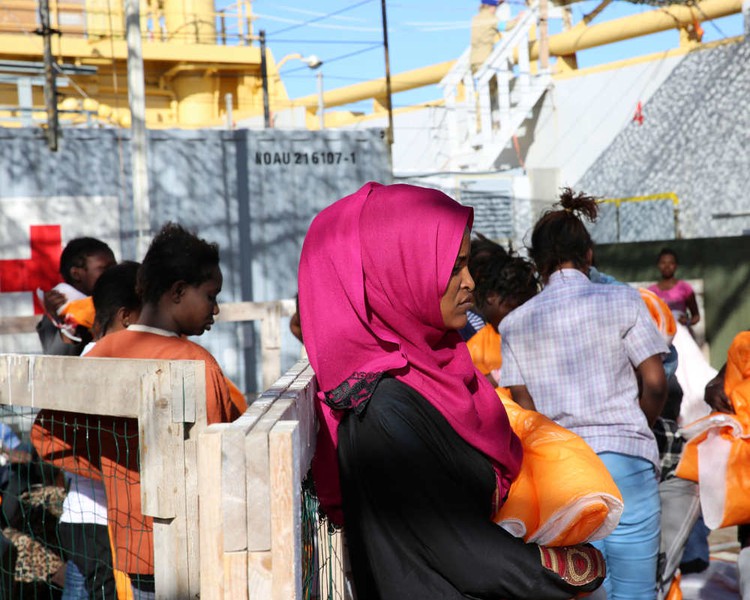Trafficking in human beings is one of the most profitable forms of organised crime, generating billions of euros for traffickers every year.
Most of the victims of human trafficking in the EU come from Sub-Saharan Africa, particularly from countries in West Africa. They are mainly from poor areas with high levels of unemployment and illiteracy. Many victims come from Nigeria, but also from Cameroon, Ghana, Guinea, Côte d’Ivoire and Sierra Leone.
News
Frontex analysis: Countering trafficking in human beings at EU’s borders
2018-03-27

Trafficking in human beings, from Nigeria in particular, has in the past few years become of particular concern to law enforcement authorities across the EU. Although human trafficking from Nigeria has, for decades, supplied the European sex market, the spike in the number of Nigerian women arriving to Italy (and, to a lesser extent, Spain), has brought this phenomenon to light.
The Nigerian victims are mostly women and increasingly young girls, many of whom are minors. They are usually recruited from poor communities where families struggle to survive. Former prostitutes turned traffickers, or people working on their behalf, often approach them with offers of well-paid jobs or studies in European countries. The future, however, turns out to be much grimmer for the many women and girls who embark on the journey to Europe.
From Nigeria, the victims travel overland to Libya or Morocco through the city of Agadez in Niger. There, they often face abuse. They are placed in locations where they are isolated from the external world, raped and forced into prostitution. Others are sold to different traffickers during the journey, changing hands like a commodity. Once in Europe, the victims are usually placed in open reception centres where they are picked up by the traffickers soon after their arrival.
Separated and unaccompanied children
Globally, children are the second-largest group of victims of human trafficking. The EU in particular has witnessed an increase in the number of registered cases of child trafficking in the past few years. Children who arrive in the EU unaccompanied or separated from their family are of particular concern, and their number has significantly increased in recent years. Most of these children are fleeing war and conflict, poverty, natural disasters, forced marriage and conscription, and travel to the EU to seek refuge and a better life. The Central Mediterranean is the main entry point to the EU for unaccompanied children.
Upon arrival in Europe, these children become the perfect target for unscrupulous traffickers, as their young age, inexperience, naivety and desire to start work or studies, make them vulnerable and easily manipulated, exposing them to a severe risk of exploitation.
The role of Frontex in protecting possible victims of trafficking
Often a border guard is the only law enforcement officer a victim of human trafficking may ever come in contact with. This is why Frontex trains border guards how to detect potential victims of trafficking and refer them to national authorities. In its operations, the agency’s officers also gather information on criminal groups, including people smugglers, and pass it on to national police and Europol to conduct investigations. Frontex also runs special operations at airports aimed at detecting victims of trafficking, especially children.
Frontex developed a training curriculum for border guards to help them identify vulnerable persons and ensure their protection. The agency also published a manual for border guards and other people working at airports to help spot children who may be victims of trafficking. The Vega Children handbook is the result of years of cooperation between Frontex, border guards, non-governmental agencies and international organisations such as the United Nations High Commissioner for Refugees (UNHCR) and International Organization for Migration (IOM) to create a set of guidelines for border guards to help assist children at risk.
Read the full analysis in our Risk Analysis Report for 2018.